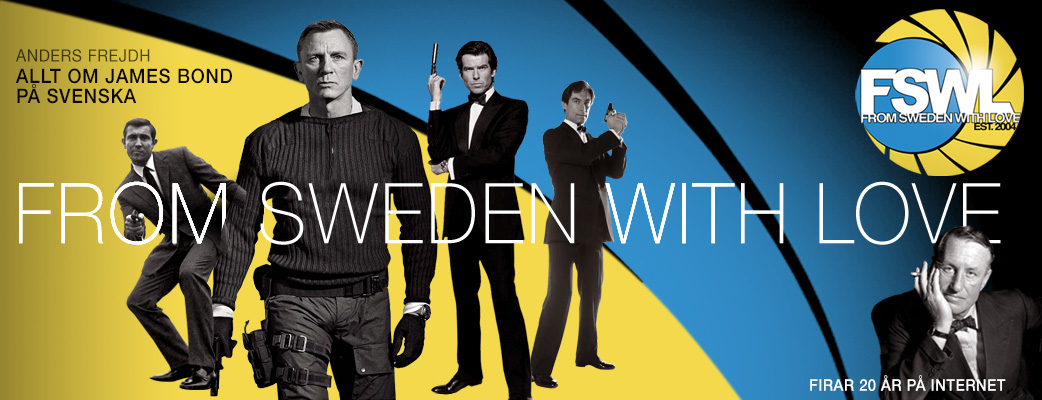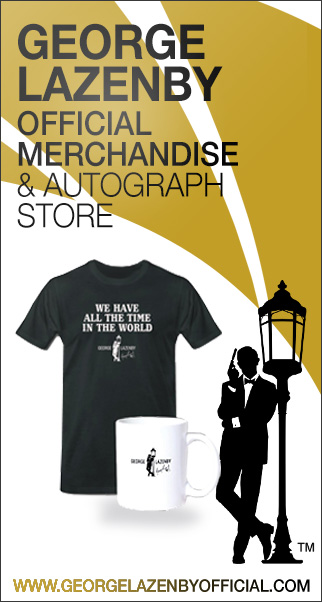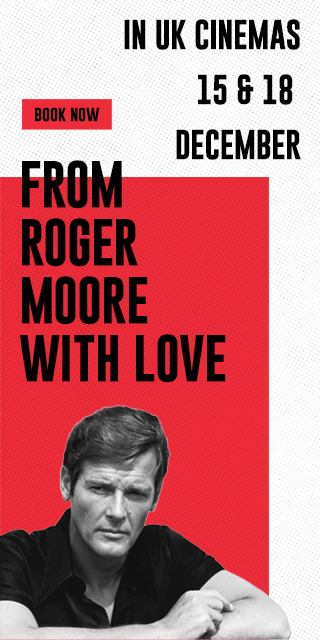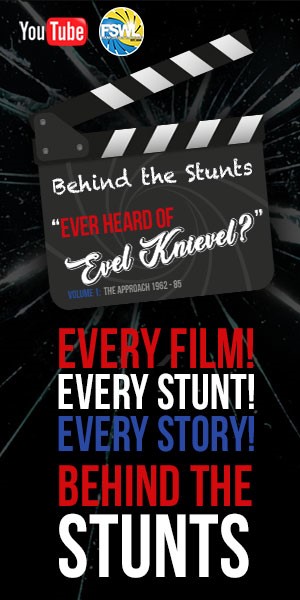Hemsidan senast uppdaterad: 2025-06-10
Hem
Bok- och filmrecensioner
Event
FSWL Merchandise
Intervjuer
James Bond 007 filmerna
James Bond 007 litteratur
James Bond 007 nyheter
James Bond 007 produkter
James Bond 007 samling
James Bond 007 shop
James Bond 007 spel
James Bond fanklubbar
James Bond personligheter
Svenskar i Bond-filmerna
TûÊvlingar
Till minne av
En hyllning av filmen I Hennes MajestûÊts hemliga tjûÊnst vid 50
Av: Eoghan Lyng
Publicerad:
2019-02-02
2019-02-02
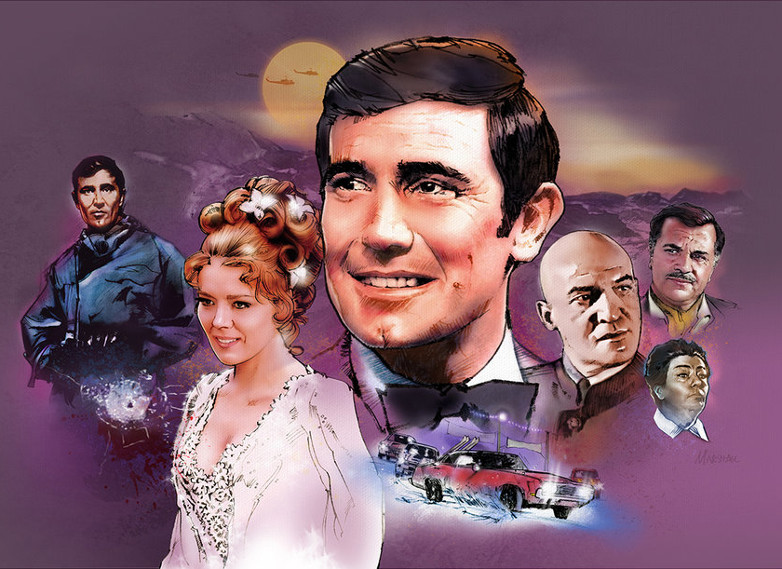
Peter Hunt, erstwhile James Bond editor, now director, found his muse in the confines of Ian Flemingãs paperback published six years earlier. It was a throve of invention. Latent violence capered in snow covered mountain ski chases. Perpetual love promised over dramaturgical bull fights. Duty torn characters denoted between their desk and their weaponry. Sophisticated corridors called for the existential interiority that were Luc Godardãs domain. Continental beaches begged for naturalistic docudramatic lighting. Prowess proclaimed from a villain secluded from his Piz Gloria Empire. Nobility and humility fighting inwardly for their respective domains of domineering ownership. Five films as an onlooker put Hunt in the periphery to decorate the most innovatory of the Bond milieu. Driven by clutches, Bondãs ski skills work as an escape, a hindrance, a blessing and a cessation. These are exquisitely captured, tellingly accoladed by Christopher Nolan in his dream woven snow tale forty years later. Huntãs approach was simple. ãDuring the entire shooting schedule, I had a copy of the paperback of the bookã Hunt recalled, ãwhere I had written various notes and things, and I was very insistent that we stay with the story of the bookã.
Between these decorated passages stands the handsomest man who has yet played Bond and certainly the most dapper, with those sartorial lapels, ûÀ la herringbone, sitting comfortably on his shoulders, not a button under pressure. Where he lacked in auctorial nuance, he balanced himself with balletic physicality and pose.
What Lazenby lacked in formal training he brought verisimilitude, a tear drenched finale befitting his torment.
Easy Rider (1969) gave him a scapegoat to cast OO7 to the past. And yet, George Lazenbyãs performance is every bit as guileless as Dennis Hopperãs, every move as meticulous as Peter Fondaãs.
Whatever failings an Australian model experiencing the rigours of cinema for the first time entailed, this was one particular shoulder shared with the aspirational Diana Rigg, wistful eyed, ethereal and magnetic in speech. Garlic condiments in between takes do little to dispel the romantic civilities the two shares in a stable. Lazenby befits the performance with three words that Timothy Dalton would intimate and Daniel Craig (less successfully) would share. Riggãs unsaintly ripostes put her in the mould of the Sixties counterculture, an athleticism that gifted her in the action scenes, a poetry that intellectualised her in the snow scenes. Eva Green worked within the confines of the seductive and cerebral throughout the Daniel Craig reboot. Green, sized in a robust red dress, befitted a strong film with a stellar performance. And yet, she was but a shadow of Riggãs willowy presence, as all the Bond female co-stars would be.
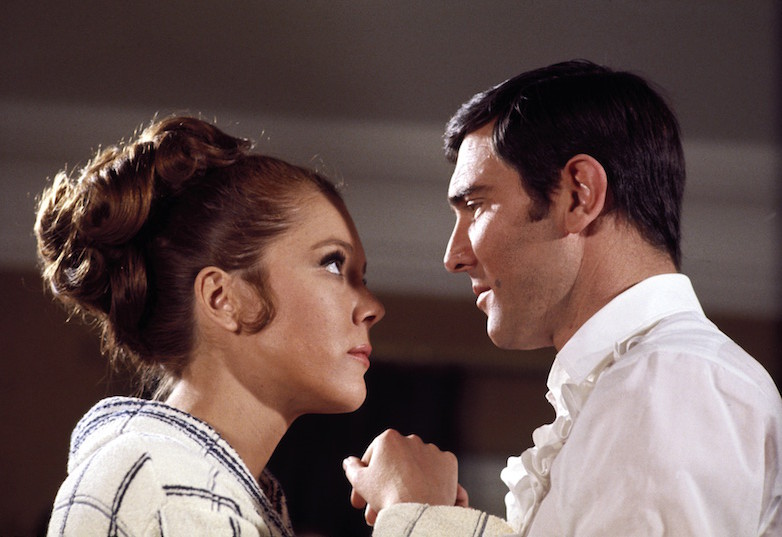
Diana Rigg & George Lazenby i I Hennes MajestûÊts hemliga tjûÊnst. ôˋ 1969 Danjaq S.A. & United Artists Corporation. Alla rûÊttigheter fûÑrbehûËllna.
Through the most delectable of montages Bond and Tracy fall in each otherãs arms, Louis Armstrongãs crisp tones singing the sweet nothings this couple shares in their most private conversations. Armstrongãs final vocal, it received overdue recognition accompanying the black and white shades a 1994 Guinness advert offered. Like most of Majestyãs, it was largely ignored in the seventies. John Glen benefitted from the footsteps Hunt led, cutting three Bond films (Majestyãs being his first), elected to Bond director in the eighties. Glen paid a fitting tribute to both his master and his premier job at the beginning of For Your Eyes Only (1981), a tomb engraved ãWe Have All The Time In The Worldã visited by a forlorn Roger Moore, naked of wink, quip or tuxedo. Itãs a beautiful shot, reinforced in Glenãs masterpiece Licence to Kill (1989), a film narratively, thematically and coherently tied to Huntãs film two decades later. Glen had used John Barryãs systematic synthesised score for The Living Daylights (1987), continuing the work heãd used through the sophisticated title track in 1969. Through clever uses of orchestration and futuristic controls, Barry based his two most rewarding scores in bringing out the more cerebral nuances Lazenby and Dalton tendered. Fitting too, out of Lazenbyãs successors, Dalton is the only other man who could have moulded such humane feelings out of Flemingãs subtext.
ãWe Have All The Time In The Worldã sung by Louis Armstrong
Such subtext is tellingly executed with paned windows showing Bondãs grief. Such nuance finely put when Bond opens his eyes from his suite to find himself bewilderingly alone. Such realisations are lost neither on Bond nor the audience when the cracked car front, which closes the film, ties back to the opening gun barrel motif that introduced Lazenby to the role. Tracy pays the price of loving Bond. Agreeing to a life away from the tidal waved suicide she aspires for at the beginning, her time with Bond has only brought her closer to her death. His hand on her head, wishing goodbyes to the one woman Bond would never wished those words for, Lazenby has never proven himself a worthier Bond than he does here. As nice as it would have been to see him grow into the role over the next few films, Lazenby didnãt need to. Majestyãs was more than enough for any actor.
The scope, the scale, the drama, the frisson, the panache, the tranquillity, the gut-punch ending. No Bond film has emerged out of the cinema since with such integrity, such demeanour, such gaiety and such sophistication. Lazenby, discussing the work with Paul Riddell in the eighties, pinpointed the success with typical chutzpah; ãWell, two reasons are pretty obvious. It is the only film that I know of that sticks to the book, and secondly, the only one that had me in it!ã Had he stuck at it, he could have been the best Bond of the cluster. Instead, heãll have to settle with the best Bond film of the bunch.
Bild ûÑverst
On Her Majesty's Secret Service konstverk av Jeff Marshall. AnvûÊnd med tillstûËnd.
Artikel skriven av Eoghan Lyng exckusivt fûÑr FSWL. Alla rûÊttigheter fûÑrbehûËllna.
Taggar:
#artiklar
#eoghan_lyng
#filmjubileum
#george_lazenby
#i_hennes_majestats_hemliga_tjanst
#jeff_marshall
Tweet
